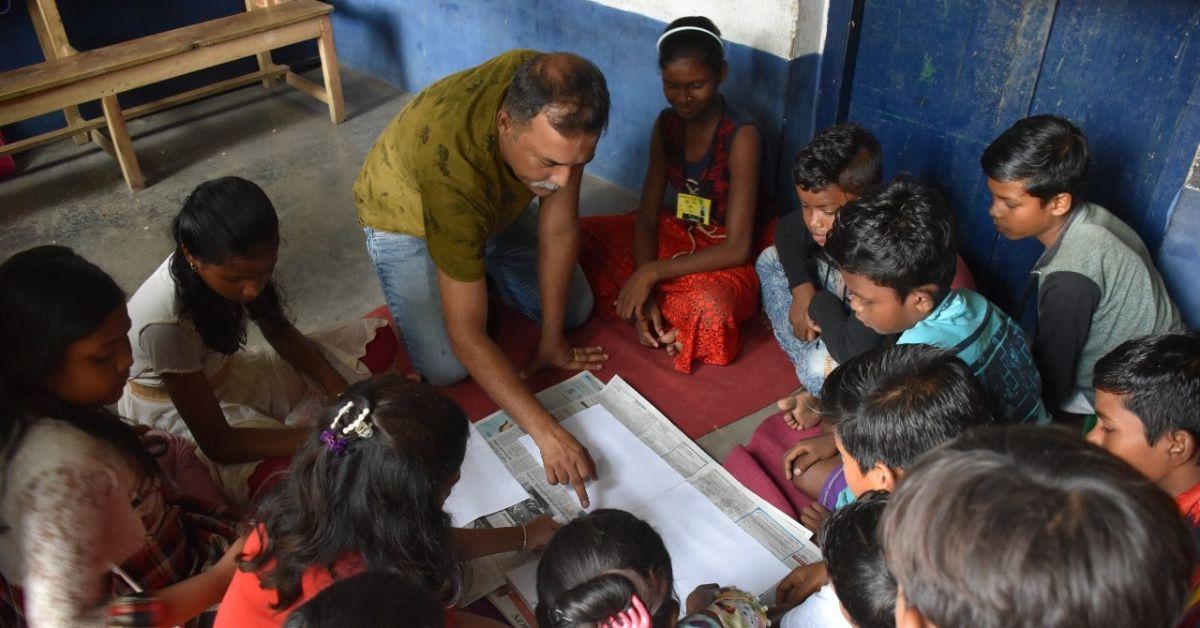Meet an Educator is a monthly series by Early Bird, where we feature the work of educators across India who are actively spreading the joy of birds and nature. This month’s featured educator is Chanchal Singha Roy, a self-motivated teacher at the Government Senior Secondary School in Kadamtala, Middle Andaman.
Do tell us about yourself, where you are from, and your work
I am Chanchal Singha Roy, I work as a teacher in the Government Senior Secondary school in Kadamtala, Middle Andaman. I am self motivated with a hunger to learn from people as much as I can. I conduct activities inside and outside the school that i work in, be it tending to an organic vegetable garden in which we collect traditional seeds or my voluntary initiative such as the Coastal Green Zone that we initiated in 2007 as a mini community library for the children of Chunnabhatta. I also run the climate literacy programme, which is an active group on social media with people from diverse fields across India. We share ideas, project activities and this free knowledge exchange about our ongoing work makes this a good platform, connecting us to the mainland even though we may be isolated in the islands.
Are you a birder? What about bird watching excites you?
I was born and grew up in the rural part of south Andaman, my father and grandfather were teachers as well. I spent my childhood and adolescence on a school campus, so you could say this profession is in my genes. I have completed 30 years in the teaching profession. Growing up, I saw that my father was a nature lover, environmentalist and involved in social activities. I was raised in this atmosphere, and took to this way of life.
How did you get into birds? Bird education?
Since you already know about my story, let me tell you how my students came to it. When we were working in the organic garden, our kids started to notice birds. They developed an affinity and soon wanted to support them. They thought that if the birds were coming to the garden, they found in it a safe place. And just like that, we had a new intention for the garden which they started growing for the birds.
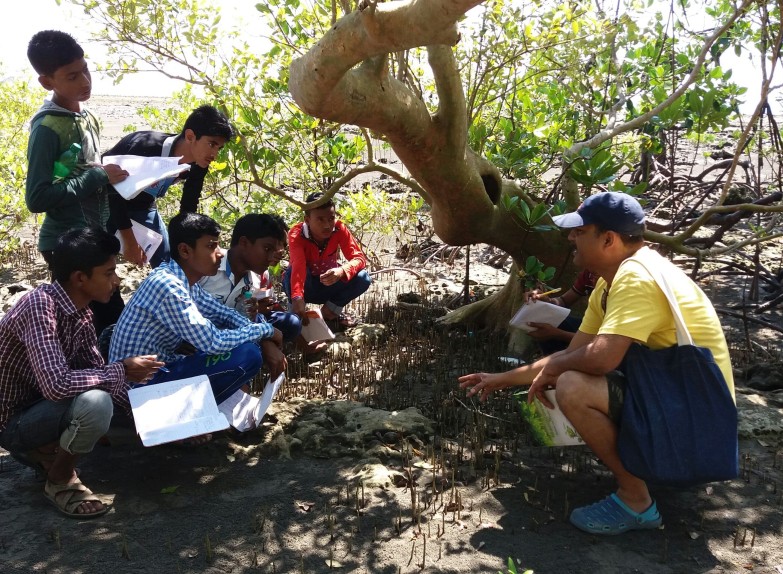
We have an active and thriving Eco Club and Model Science Centre as part of which the kids go birdwatching. We get good results and interesting observations from regular bird watching, they notice things like what plants and insects are there, interconnections in the context of birds. They learn new information and skills such as identification through photographs, books. We go on walks, make it a point to find out local names, learn about the bird’s features, how to protect them and keep their habitats undisturbed.
What tools or resources have helped you in teaching about birds?
As part of my teaching position, I engage in a range of outdoor activities and use every possible opportunity for teaching/learning about nature at large. Let me tell you about some methodologies and projects that have helped me find success in my work:
- Storytelling: as a deeply rooted tradition in our culture, storytelling is ancient and powerful. It was especially useful during lockdown when the kids got addicted to their mobiles and we had to break out of that bubble. When we do work outdoors in the mangroves or forest, we engage in storytelling – talking about Andaman’s folklore, animals, plants and birds.
- Creativity and Expression: they often compose poems, make drawings, are wonderful orators of stories, develop and perform skits and so much more. We screen videos and I have created a book called ‘My Friend Dugong’. I try to create opportunities to express what they observe and experience.
- Exhibitions: are a great opportunity for kids to collaborate as a team and exchange ideas. We did a successful virtual exhibition via mobile phone.
- Making Connections: I take time to talk about issues and how they impact our lives, also to inculcate a sense of pride; for instance, we discuss our State Tree, Animal or Bird and ways in which we can protect these species. As much as possible, we try to form links to real life situations, which is a continuous process.
- Interviews: kids interviewed senior citizens to understand our past heritage – what was the climate, animals and birds like then? This was an enriching experience for them, which helped develop other skills like communication, how to present information, working in a group.
- Discussions and Experts: the kids are endlessly curious with questions like ‘is a coral an animal or plant?’ We sometimes call experts to interact with, openly discuss local issues and how they are connected with local resources. In this joyful learning environment, they never feel like anything is a new and overwhelming subject, instead look forward to exploring the unknown.
- Place-based education: is a methodology that I focus on. The national curriculum has limited scope to adapt to local cultural and natural heritage. I try to minimize this gap by focusing on local issues, art, culture and folk stories. After all, there are no blanket lessons in education.
- Child-centered and the play way method: goes a long way to keep things fresh and exciting. I believe children are the primary stakeholders in their education, and find it is important for them to be invested in their own learning.
What do you hope to achieve through your education work?
I aim to make responsible citizens out of the children I interact with. I do my best to help them find ways to protect the ecosystems which they are a part of. To me it is important to achieve all this by using and sourcing locally available resources, so that we can maintain it as part of our lifestyle in the long term. I want to focus on leadership qualities and skill building.
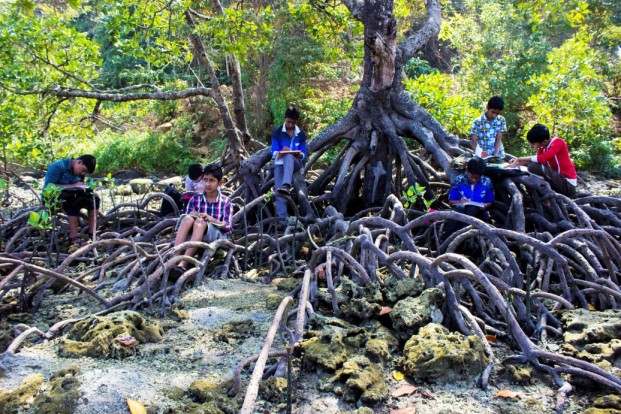
Through nature education, I want to help them find an affection and attachment to nature and I believe they do. For instance, we have a practice in which they write letters to their friends, which offer wonderful opportunities for reflection and critical thinking. Many diverse subjects have come up, they write about other living things and express love and affection to a great degree. It is clear that they want to protect their natural resources and biodiversity.
Why do you believe it is important for children to learn about birds or connect with nature?
Youth and children are an important part of the community and should be nurtured to protect nature, otherwise – who will do it? It is their responsibility, not outsiders. Education and awareness hold the key to this. Ours is a globally unique ecosystem that are the Andamans’ mangroves. While it faces endless threats, both natural and man-made; however, I want my learners to connect with the natural world from a place of love and not from the point of view of issues and problems. I want to inculcate selflessness – to motivate, not discourage. I do not wish to play the blame game at any cost.
Have you encountered a significant challenge as a bird/nature educator?
In the beginning, people around me thought I was crazy, they didn’t understand – why is this person taking kids into the jungle? They held major misconceptions about my work and intentions, parents wouldn’t permit their kids to participate and moreover, there was a strong mindset of the people that nature is there for us to use, why should we protect it?
Over time as I continued to work consistently and the impact was more visible, the community vouched for us, we have the support of families now. With encouragement from the Departments of Education and Forest & Wildlife as well as from Panchayati Raj, it has beome easier to organize activities at the village level.
I have a strong conviction in Tagore’s famous song – ‘Jodi tor dakh sune keo nah ashe, tobe akhla chalo re’ (translation: even if nobody follows you, walk alone). I will fight till the end for what I believe is right and will not compromise with my vision at any cost.
Do share any memorable moment or experience you have had in teaching kids about birds/nature.
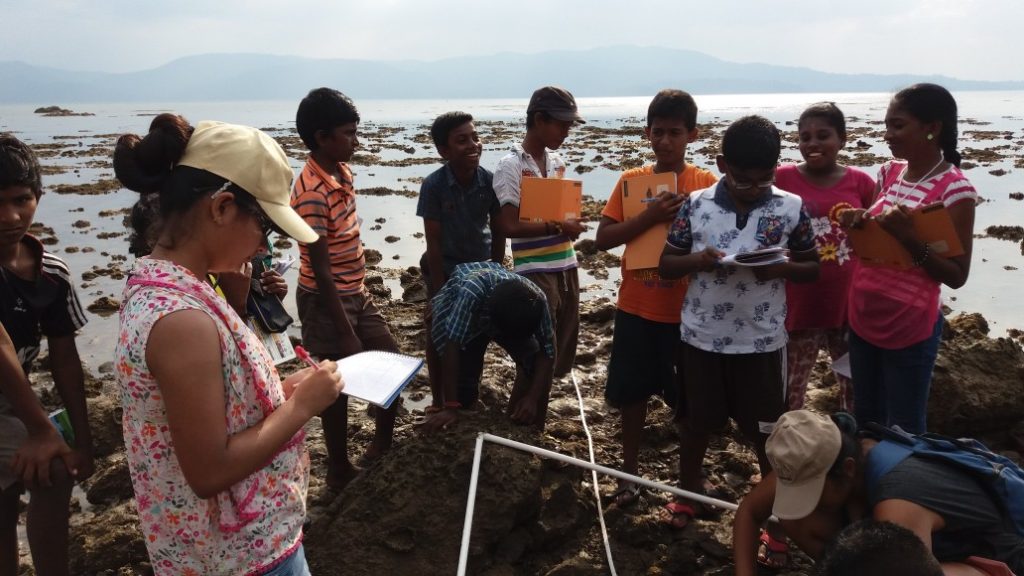
I find immense satisfaction in my job and there have been so many special memories. One time, we could see smoke coming from the mangroves. The kids realised that it was a forest fire and wanted to help counter it. They wouldn’t stop at no, took permission from parents, rowed out on a boat and tried to put it out with water. Eventually, we called the Forest Department who acted on the situation. For me, this was an inspiring story.
Another time, we were at Kalipur Beach in Diglipur in North Andaman working on a project to develop observation skills in students from 6th and 7th standard. At once, a few of them came running towards me saying they had spotted an orchestra party! I was puzzled as there weren’t even people there. Anyway, I went along with it and to my surprise they brought us to the mangroves where the crabs were dancing in synchronized movement. It was wonderful to watch.
Finally, a child from our community has won the Wipro Earthian award twice for projects in 2018 (for the role of community in mangrove forest) and in 2020 (on lockdown challenges and changes). We were all in quarantine and s/he has done it on their own with support over video calls. I was so proud and it was then that I truly internalised that understanding that my duty as a teacher was only to shape potential and that with the right motivation, these children can achieve anything they set their minds to.
Have you noticed any changes in your learners after they received exposure to birds and nature-based learning?
Certainly. They are more confident, easy to express themselves, are able to communicate and discuss complex issues (such as climate change or ocean warming) about the environments in which they live. They have developed key life skills such as – leadership, observation, reasoning and a keen scientific temperament.
What’s more? Until 2 to 3 years ago, some of these children were hunting or disturbing birds in some form. Over time, we have worked with them to help them understand about biodiversity and how this planet is not only for us, how other living things need love, respect and have a right to life. They are self-motivated to take up the responsibility of protecting their immediate environments. This was a big change that took them closer to nature, the realization and respect for the right to life. They channelise change in positive and creative ways.
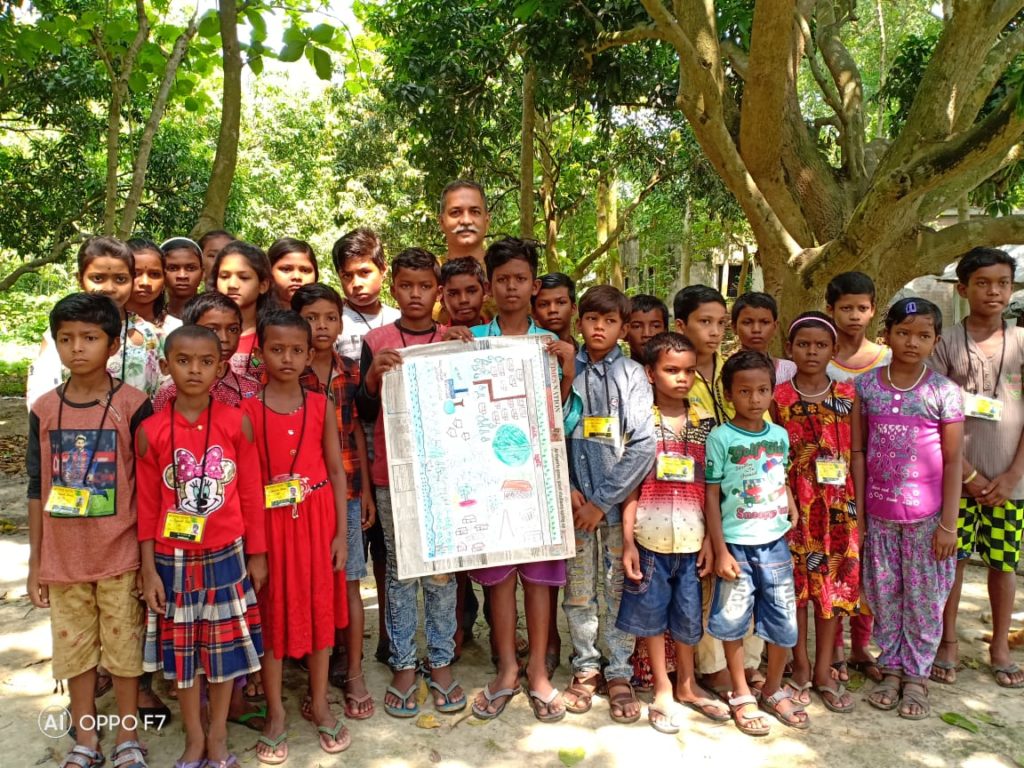
What message would you have for your fellow educators, or somebody starting out in their nature education journey?
Love, interest and patience. You have to constantly study, and make a variety of aspects known to you – this will enrich both you and your students. Then, build strong communication and practice observations with consistent field work. Nature education is a wonderful journey made sweeter with a dedicated mind and attachment to the natural world, find new ways to immerse yourself in it. This work is not to get awards or fame, we must be content to work silently towards long term goals.

